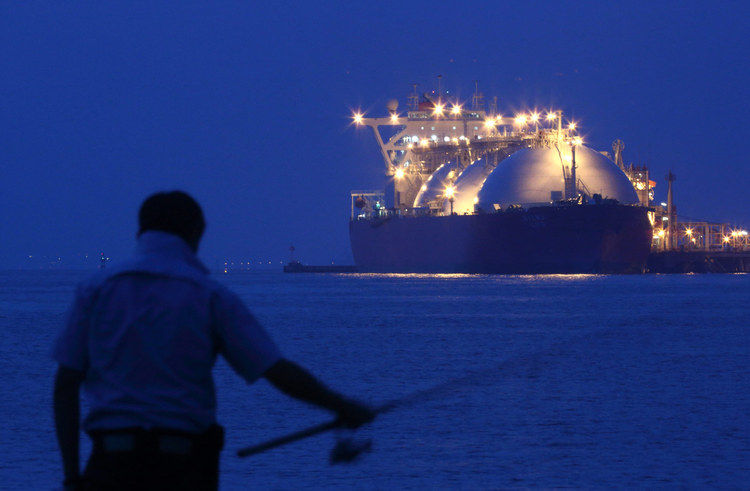
On the leafy southern shore of Australia’s Curtis Island, a jetty shoots out over a stretch of water to fill tankers the length of city blocks with liquefied natural gas. Another jetty juts out about 2 kilometers south. A further 800 meters down the coast sits a third.
For one industry veteran, the crowded shoreline represents a $10-billion missed opportunity. It’s the amount that could have been saved had the energy rivals that built separate LNG plants on the island collaborated on a single facility, according to Martin Wilkes, a consultant with 20 years industry experience. They could have produced the same amount of fuel but eliminated extra jetties, storage tanks and other costly infrastructure, he estimates.
The extra cost may not have made energy giants flinch in the days of $100 oil, but after the biggest collapse in prices in a generation it can make the difference between a project living and dying. Companies like Exxon Mobil Corp. are now looking at proposed projects from Mozambique to Papua New Guinea and asking how project developers that would have been competitors can instead be partners.
“We talked to the Curtis Island projects in 2009 about combining and collaborating,” but they ended up building all three, said Wilkes, a Perth-based principal adviser at RISC Advisory. “There are significant savings to be made through collaboration, but people have to approach it in a way that’s different than the past.”
Origin Energy Ltd., the operator of the Australia Pacific LNG project, declined to comment, as did Queensland Curtis LNG leader Royal Dutch Shell Plc and Gladstone LNG operator Santos Ltd.
Mozambique’s government is pushing two competing LNG projects to work together to improve economics, according to the partner in one of the ventures. Exxon is spearheading the combination of rival projects in Papua New Guinea. In western Australia, Woodside Petroleum Ltd. is pitching for competitors to use its existing liquefaction plant in lieu of building their own. Unsanctioned projects in western Canada may also collaborate, according to IHS Markit Ltd.
Eliminate Duplication
Energy companies have long partnered together on individual projects to share costs and risk. The shift now toward combining already-planned projects is part of a larger cost-cutting effort across an LNG industry that’s trying to snap more than two years without a major new project sanctioned. About $1 trillion in global energy spending was curtailed because of the energy crash, Saudi Arabian Energy Minister Khalid Al-Falih said in Kuala Lumpur Monday.
Producers are under pressure to keep costs down as a spate of new LNG plants approved earlier this decade come online over the next few years, threatening to overwhelm demand and keep a cap on prices. Annual global production capacity will grow to 407 million tons by 2020, compared with projected demand of about 274 million tons, according to Bloomberg New Energy Finance.
Spot LNG in Asia was at $5.75 per million British thermal units on May 1, down from nearly $20 in early 2014, according to World Gas Intelligence. Oil prices are 50 percent below their 2014 peak.
“We’re seeing a lot of people try to push down costs, and where they can collaborate on projects they probably will,” said Kittithat Promthaveepong, a gas analyst with industry consultant FGE in Singapore. “This will probably be the general way forward.”
If producers can’t find a way of affording new projects, that surplus could eventually flip to a deficit as cheap LNG spurs more consumption. Demand will outpace supply by 2026 without new developments being funded, according to BNEF.
About 30 new liquefaction trains need to be sanctioned by 2025 to stop a supply squeeze, Jack Fusco, chairman of U.S. LNG exporter Cheniere Energy Inc., said April 5 in Tokyo. The last onshore greenfield project to be funded was Novatek’s Yamal LNG, which reached final investment decision in December 2014.
Recommended for you
